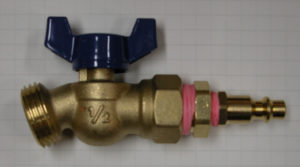For decades there have been four basic, agreed upon, civilian firearms safety rules. (Police and military are slightly different.)
- All guns are always loaded.
- Never point the muzzle at anything you are not willing to destroy.
- Never touch the trigger until the sights are aligned with the target.
- Be sure of your target and what is behind it.
I have been noticing the appearance of so-called appendix carry including an inside the waist band variant, AIWB. This places the holstered handgun in front of the strong side hip against the tummy, and for right handers, over the appendix, hence the name. I suppose the idea is a quick draw from under an untucked shirt.
This is a really bad idea and seriously violates rule #2. Expecting to use this for a fast draw under combat stress is a worse idea. The muzzle is pointing directly at you-know-what if you’re male and similarly valuable parts if you’re female. When sitting down it is pointed at your femoral artery. These certainly fit in the not to be destroyed category.
All the traditional carries, back of the hip strong side, SOB, cross draw, western, and various shoulder rigs do not point the handgun at the wearer for a reason.
If you are new to concealed carry, be aware appendix carry is a dangerous fad to be avoided. Every few months a news story appears somewhere in the country reporting on some free lance socialist who walked into a local store to rob it, grabbed his pistol from his waist band, and removed himself from the gene pool. Massad Ayoob‘s StressFire explains how badly combat stress interferes with fine motor control including trigger discipline. It is written for police training and tries to convey the difference between a range session and a firefight – kind of like the difference between seeing a picture of a roller coaster and riding one. An excellent resource is Ayoob’s In The Gravest Extreme: The Role of the Firearm in Personal Protection. This is written for civilians and ranges from tactics to legal issues. Massad Ayoob is a highly respected police trainer, self defense author, and founder of the Lethal Force Institute. Another resource is Jeff Cooper’s Principles of Personal Defense. Arguably the best books written on the reality and effect of lethal action are Lt. Col. Dave Grossman’s On Combat and On Killing. The point of reading these is to try to understand what’s going to happen in the event.

